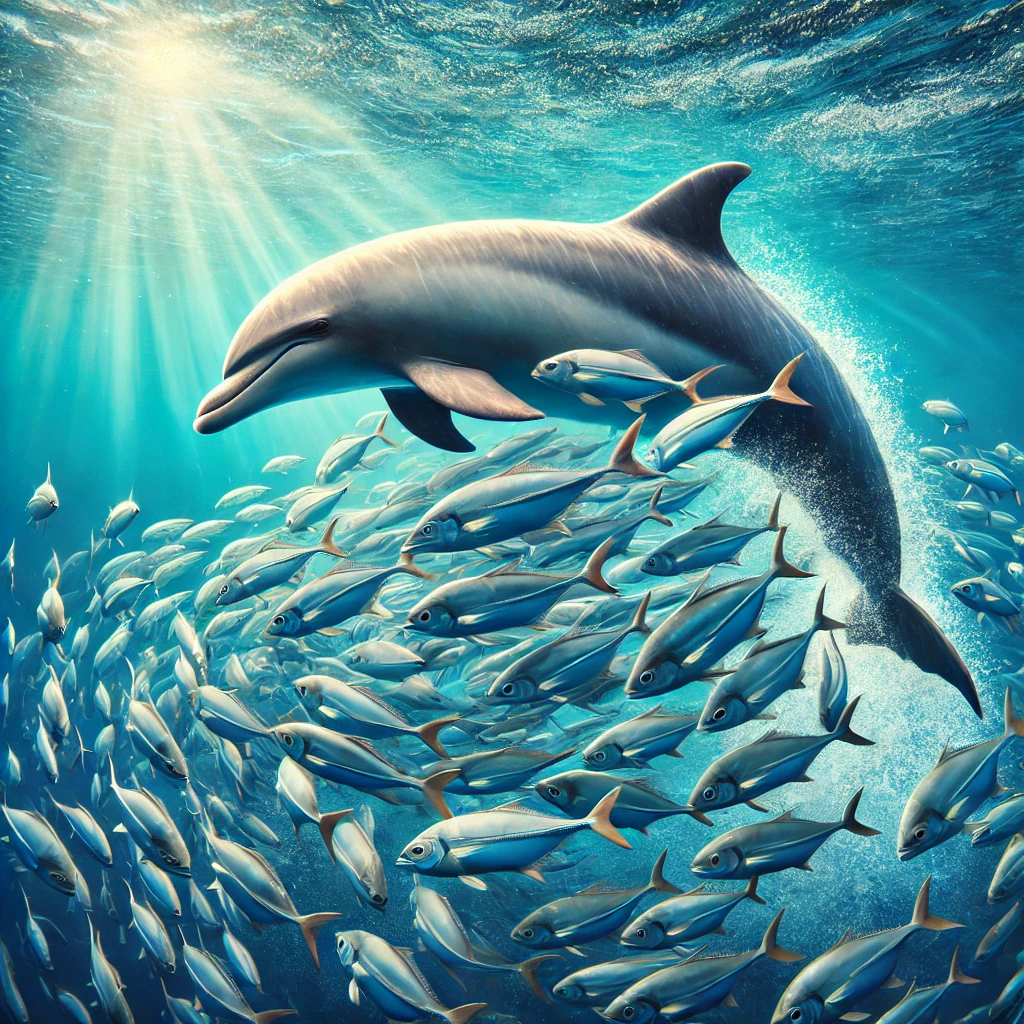What Do Dolphins Eat?
Dolphins capture the curiosity of many, not only because of their intelligence and playful behavior but also due to their unique adaptations in the wild. Understanding what dolphins eat gives us a glimpse into their behavior, biology, and role in marine ecosystems. In this guide, we explore the diet of dolphins, how they hunt, and the significance of their feeding habits on the marine food chain.
1. The Basic Diet of Dolphins
Dolphins primarily consume fish, squid, and crustaceans. However, the exact diet varies by species, habitat, and available food sources. With over 40 species of dolphins, each species has its own preferences and dietary requirements based on factors like size, geographical location, and hunting technique.
- Fish: Fish make up a significant portion of most dolphins’ diets. Common types include herring, mackerel, and mullet, which are abundant in coastal areas where many dolphins live. Dolphins usually swallow fish whole, head first, to avoid injury from sharp fins.
- Squid: For species that live in deeper waters, such as the short-finned pilot whale, squid becomes a primary food source. Squid is also a staple for other deep-sea dolphins like the Risso’s dolphin, which prefers cephalopods due to their abundance in certain regions.
- Crustaceans: While less common than fish or squid, some dolphin species eat crustaceans, such as shrimp or small crabs. These are more common in coastal areas where dolphins can access shallower waters with sandy or muddy bottoms, where crustaceans tend to live.
2. How Dolphins Hunt for Food
Dolphins exhibit impressive hunting skills, using a combination of intelligence, echolocation, and teamwork. Their hunting techniques vary by species and location, allowing them to adapt to different environments.
- Echolocation: Dolphins rely on echolocation, a natural sonar system, to detect and locate prey. They emit a series of clicks and listen to the returning echoes to determine the location, size, and speed of their prey. This adaptation is especially useful in murky or deep waters.
- Cooperative Hunting: Many dolphin species hunt in groups, using coordinated movements to herd fish into tight clusters, making it easier to capture them. This behavior, known as “fish herding,” allows dolphins to increase their hunting efficiency and ensure enough food for the group.
- Strand Feeding: Some dolphins have developed unique methods like strand feeding, where they force schools of fish onto shallow beaches to catch them more easily. This technique is mainly seen in certain bottlenose dolphin populations along the U.S. East Coast.
- Mud Ring Feeding: Dolphins in Florida Bay exhibit mud ring feeding, where they use their tails to create a ring of mud, trapping fish inside. The trapped fish jump out of the muddy circle, making them easy targets for the dolphins.
3. Diet Variations Across Dolphin Species
Each dolphin species has a slightly different diet, depending on their habitat and anatomical adaptations. Here’s a look at the diets of some well-known dolphin species:
- Bottlenose Dolphin: Bottlenose dolphins, common in coastal and shallow waters, eat a wide variety of fish and squid. They adapt their diet based on the availability of local fish species and have even been known to consume eels and shrimp.
- Orca (Killer Whale): Orcas, the largest members of the dolphin family, have a diverse diet. Some orca populations hunt fish like salmon, while others specialize in larger prey, including seals, sea lions, and even other whales. They adapt their hunting strategies to the specific prey available in their environment.
- Spinner Dolphin: Found in tropical oceans, spinner dolphins primarily feed on fish and squid that rise to the surface at night. Their diet depends heavily on small fish species, making them more specialized in nighttime feeding.
- Risso’s Dolphin: Risso’s dolphins, known for their preference for squid, live in deeper waters where squid populations thrive. Their diet reflects this, as they consume squid more than any other type of prey.
4. How Diet Impacts Dolphin Health and Behavior
A dolphin’s diet directly influences its health, social structure, and reproductive success. Dolphins that have a balanced, nutrient-rich diet tend to have better health and more energy for social and reproductive activities. Here’s how diet impacts dolphins’ lives:
- Energy Levels and Hunting Skills: Dolphins that consume high-calorie foods, such as fatty fish, have more energy for physical activities, including hunting and social behaviors. A poor diet, on the other hand, can lead to reduced energy and vulnerability to diseases.
- Social Structure: Food availability often affects dolphin social structures. Species that rely on cooperative hunting, like bottlenose dolphins, form complex social bonds to enhance their hunting efficiency.
- Reproductive Success: Dolphins with consistent access to nutritious food are more likely to have higher reproductive success. Proper nutrition allows females to nurture their young, ensuring their offspring’s survival and growth.
5. Dolphins’ Role in Marine Ecosystems
Dolphins play a significant role in maintaining the balance of marine ecosystems. As apex predators, dolphins help regulate fish and squid populations, preventing any one species from dominating and disrupting the ecosystem.
- Population Control: By consuming various marine animals, dolphins help control fish and squid populations, preventing overpopulation and promoting biodiversity.
- Indicator Species: Dolphins are often considered indicator species, meaning their health reflects the state of their ecosystem. A healthy dolphin population indicates a balanced ecosystem, while declining numbers can signal environmental issues like pollution or overfishing.
6. Human Impacts on Dolphins’ Diet
Human activities significantly impact dolphins’ access to food. Overfishing, pollution, and habitat destruction can limit food availability, threatening dolphin populations.
- Overfishing: Human fishing practices can deplete fish stocks, leaving dolphins with fewer food options. Overfishing also disrupts food chains, affecting dolphins indirectly by reducing prey for their typical food sources.
- Pollution: Contaminants like plastics, chemicals, and oil spills impact marine life and accumulate in dolphins’ prey, which may cause health issues for dolphins that consume contaminated fish.
- Climate Change: Rising ocean temperatures and changing currents influence prey availability, forcing dolphins to alter their feeding habits and potentially impacting their health.
Frequently Asked Questions About Dolphins’ Diet
- Do dolphins eat every day?
Yes, dolphins need to eat daily to sustain their energy. The amount varies, but a dolphin typically eats 4-6% of its body weight each day. - Are dolphins carnivores?
Yes, dolphins are carnivores. They primarily consume fish, squid, and crustaceans, with a diet that depends on their species and habitat. - Do dolphins eat plants?
No, dolphins do not eat plants. Their diet consists exclusively of meat, as they lack the digestive adaptations needed to process plant material.
Conclusion
Dolphins’ diet reflects their adaptability, intelligence, and role within marine ecosystems. From fish and squid to crustaceans, dolphins consume a variety of prey, using advanced hunting techniques and teamwork to capture their food. By understanding what dolphins eat, we gain insight into their health, behavior, and the importance of protecting their environment. As human impact on oceans increases, preserving dolphin habitats and food sources remains crucial for the survival and well-being of these incredible marine animals.






